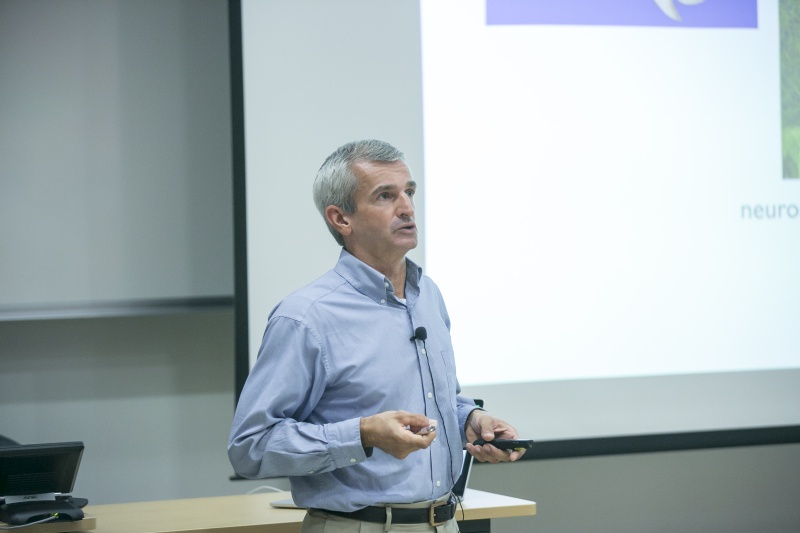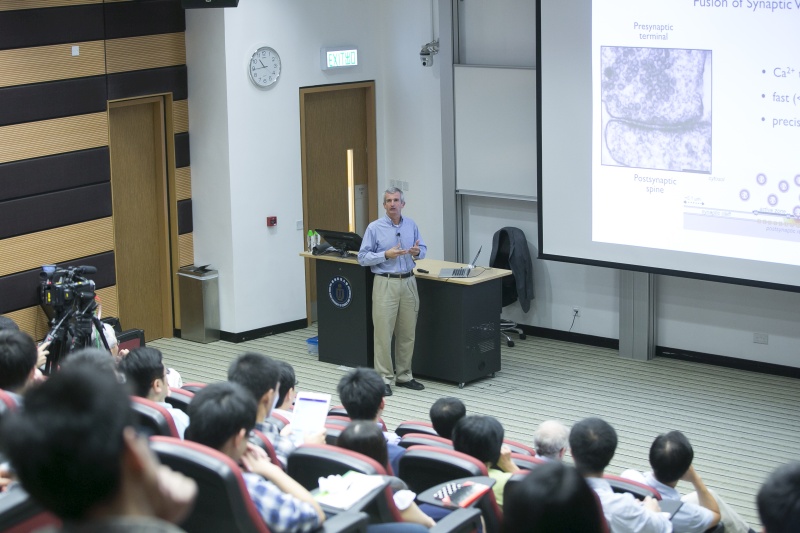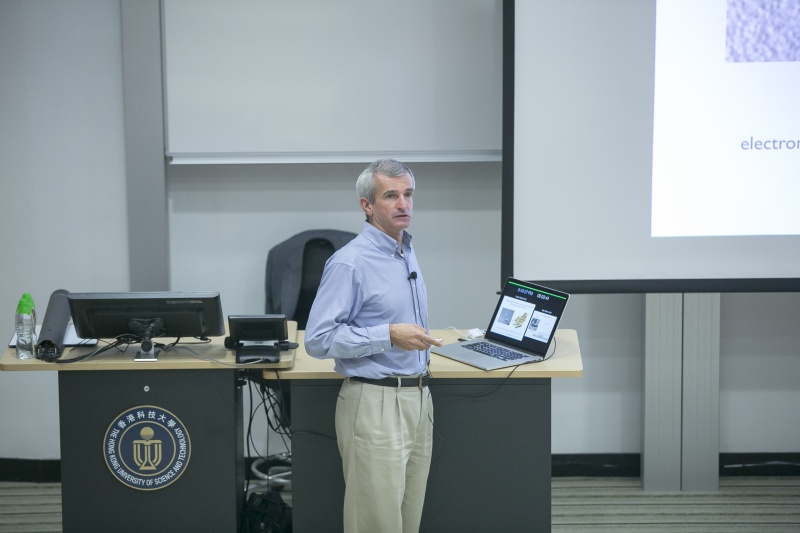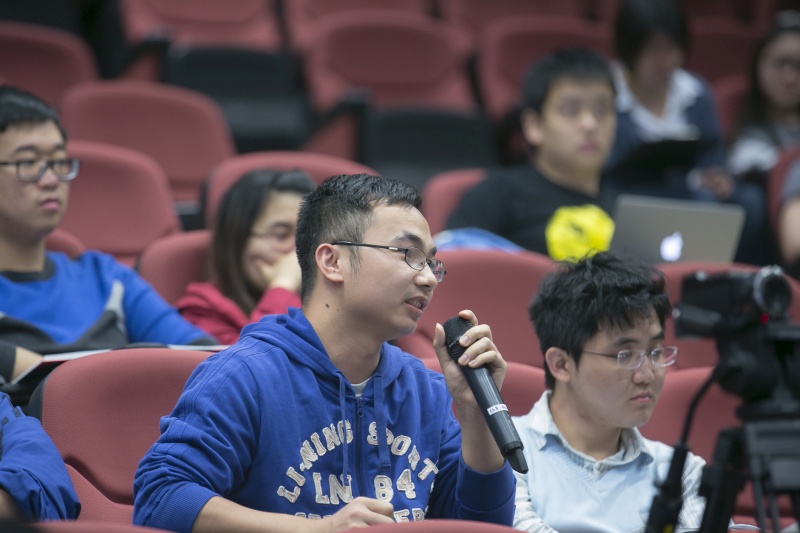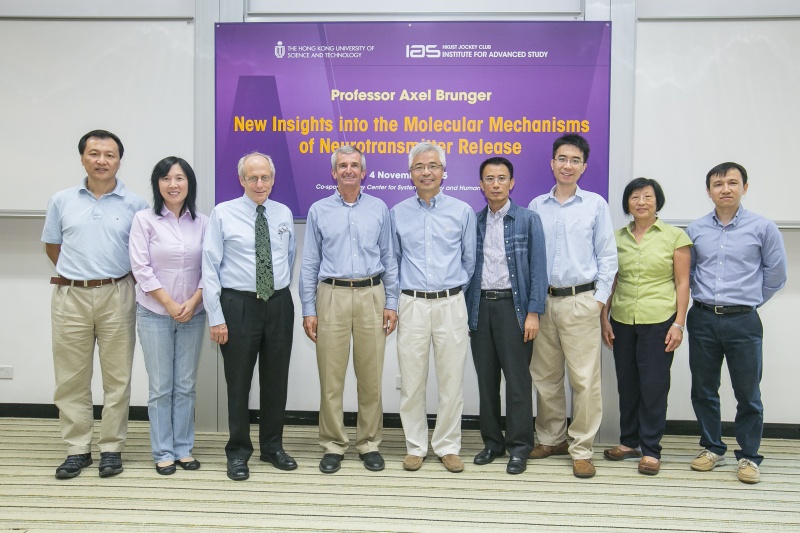New Insights into the Molecular Mechanisms of Neurotransmitter Release
Abstract
The speaker's current research primarily focuses on the molecular mechanisms of synaptic neurotransmitter release. He and his collaborators determined the first X-ray crystal structure of the neuronal SNARE complex in 1998, setting the framework for subsequent functional and mechanistic studies of synaptic vesicle fusion. The speaker's laboratory also determined X-ray crystal structures of other key components of the synaptic release machinery, including parts of the ATPase NSF (N-ethylmaleimide sensitive factor), Sec 17 (an α-SNAP homolog), synaptotagmin's C2 domains, and Rab proteins and their effectors. Subsequently, his laboratory developed a reconstituted system with synaptic proteins to study synaptic vesicle fusion at the single vesicle level. This system revealed new insights about fusion pathways and the molecular mechanisms of synaptic proteins. Recently, the speaker and his collaborators determined the structure of the so-called 20S complex consisting of the SNARE complex, α-SNAP, and NSF by electron cryo-microscopy at a resolution (7.6 Å) that has provided new insights about the mechanism of this molecular "recycling" machine. His laboratory also recently determined the atomicresolution structure of the complex between the Ca2+ sensor synaptotagmin-1 and the neuronal SNARE complex. This structure revealed a conserved, Ca2+-independent interface that is essential for fast synchronous neurotransmitter release, suggesting that the synaptotagmin/SNARE complex is pre-assembled prior to the arrival of Ca2+, and moves en bloc as an entity upon Ca2+-triggering. The simultaneous membrane interactions of the Ca2+ binding loops, of the polybasic region, and of membrane-proximal region of the SNARE complex would therefore require a deformation of the plasma membrane. This morphological change of the plasma membrane juxtaposes the membranes closer than the critical distance to promote stalk formation, and subsequently leads to fusion pore opening.
About the speaker
Prof. Axel Brunger obtained his PhD in Biophysics from Technische Universität München in 1982. He held a NATO postdoctoral fellowship and subsequently became a research associate at Harvard University. In 1987, he joined the faculty in the Department of Molecular Biophysics and Biochemistry at Yale University. In 2000, he moved to Stanford University where he is currently the Professor and Chair of the Department of Molecular and Cellular Physiology. He also holds an appointment as Investigator in the Howard Hughes Medical Institute (HHMI).
Prof. Brunger’s research goal is to decipher the molecular mechanisms of synaptic neurotransmitter release by conducting single-molecule/particle reconstitution and imaging experiments, combined with high-resolution structural studies of the synaptic vesicle fusion machinery. He also focuses on developing advanced biomolecular imaging methods at the molecular scale.
Prof. Brunger was elected as a member of the US National Academy of Sciences in 2005. In 2011, He was granted the Method to Extend Research in Time (MERIT) Award from the US National Institute of Mental Health. He has received numerous awards including the DeLano Award for Computational Biosciences of the American Society for Biochemistry and Molecular Biology in 2011, the HHMI Collaborative Innovation Award in 2012, the Sir Bernard Katz Award of the Biophysical Society and the Carl Hermann Medal of the German Crystallographic Society in 2014. He has been selected as the recipient of the 2016 Trueblood Award of the American Crystallographic Association.



